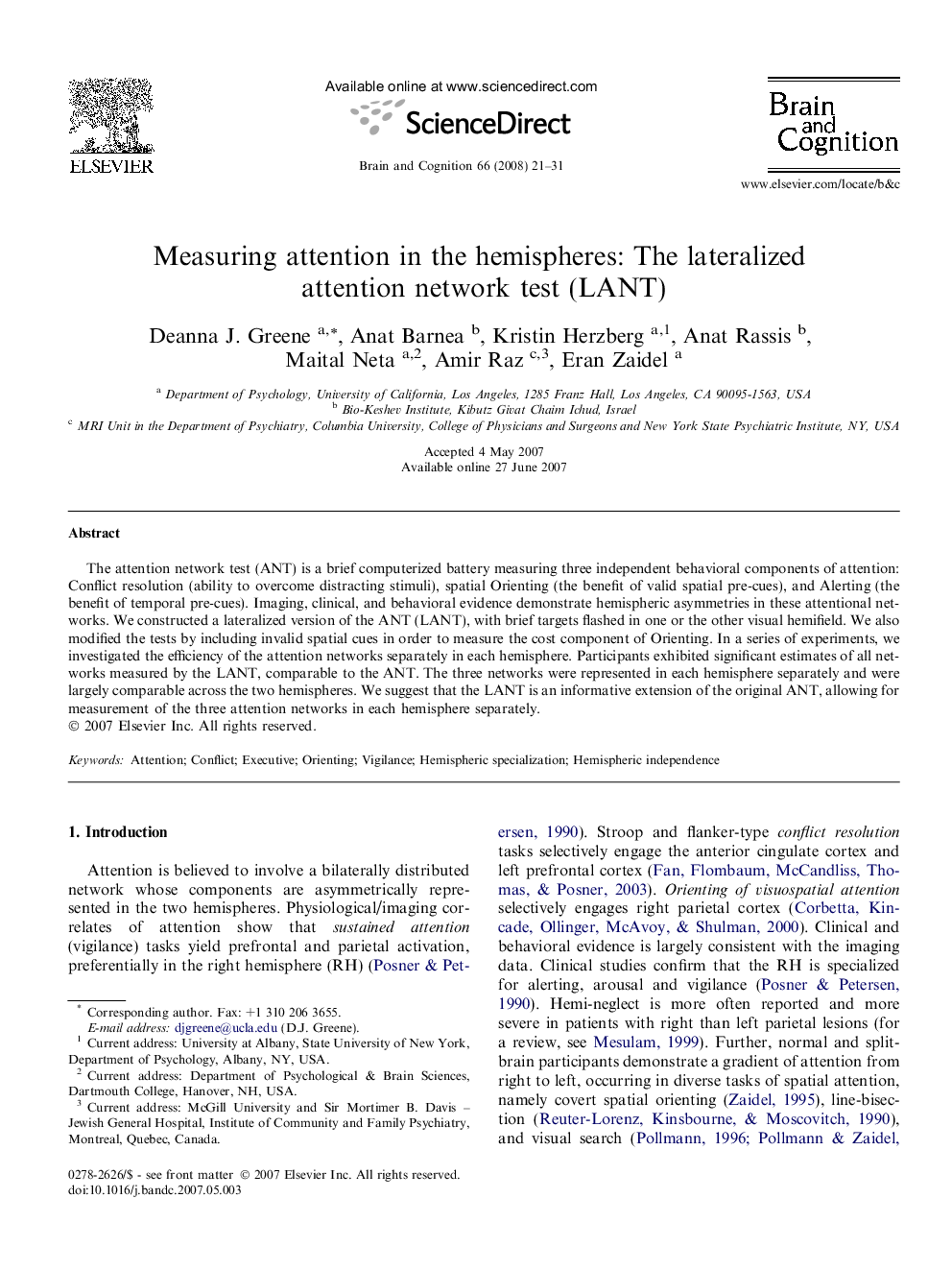| Article ID | Journal | Published Year | Pages | File Type |
|---|---|---|---|---|
| 924358 | Brain and Cognition | 2008 | 11 Pages |
The attention network test (ANT) is a brief computerized battery measuring three independent behavioral components of attention: Conflict resolution (ability to overcome distracting stimuli), spatial Orienting (the benefit of valid spatial pre-cues), and Alerting (the benefit of temporal pre-cues). Imaging, clinical, and behavioral evidence demonstrate hemispheric asymmetries in these attentional networks. We constructed a lateralized version of the ANT (LANT), with brief targets flashed in one or the other visual hemifield. We also modified the tests by including invalid spatial cues in order to measure the cost component of Orienting. In a series of experiments, we investigated the efficiency of the attention networks separately in each hemisphere. Participants exhibited significant estimates of all networks measured by the LANT, comparable to the ANT. The three networks were represented in each hemisphere separately and were largely comparable across the two hemispheres. We suggest that the LANT is an informative extension of the original ANT, allowing for measurement of the three attention networks in each hemisphere separately.
